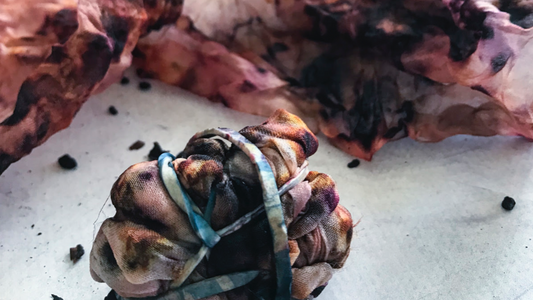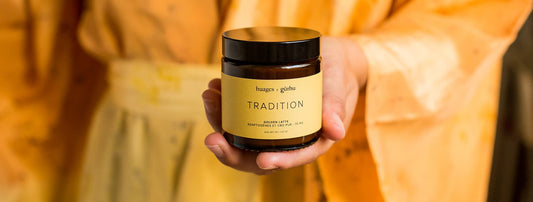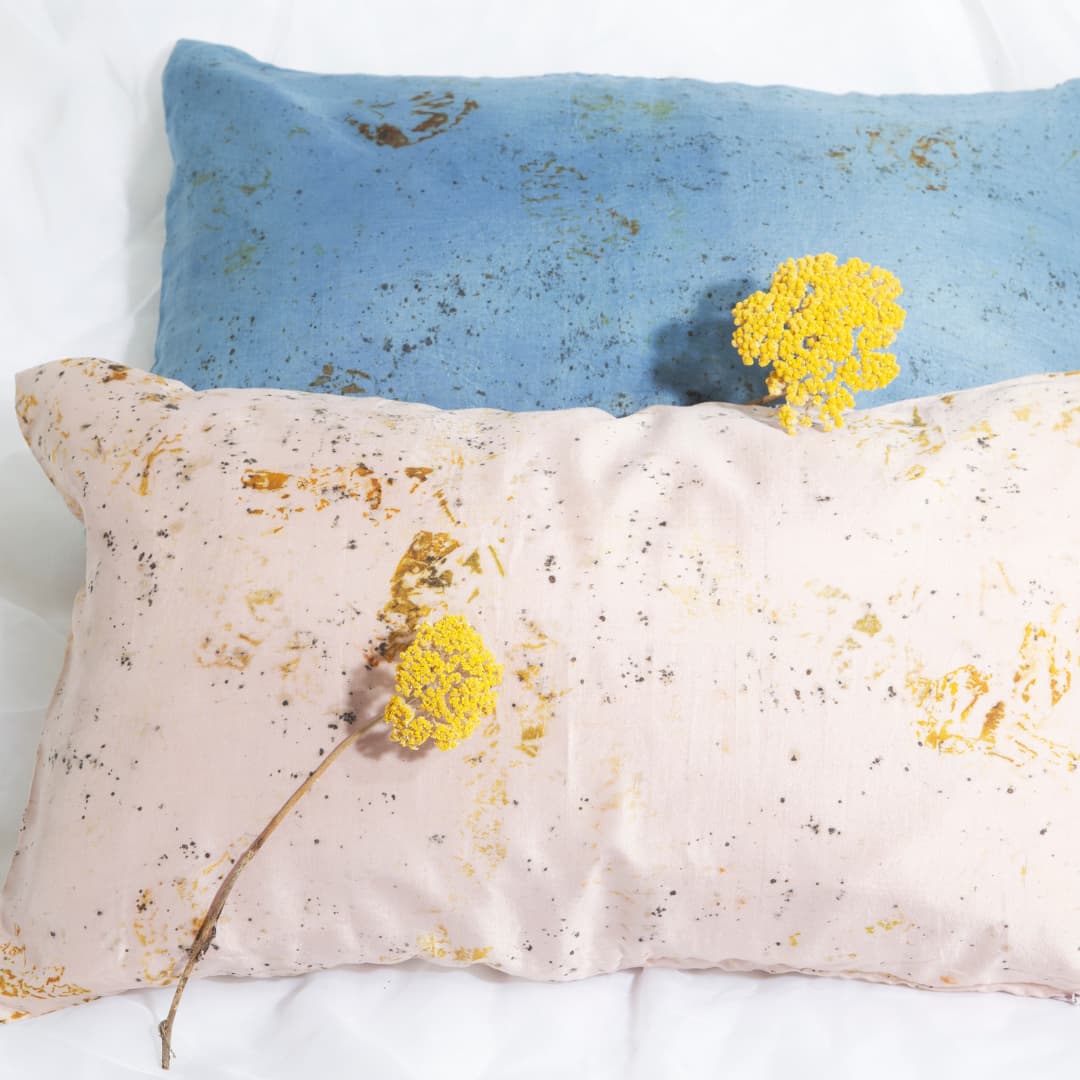Silk and satin are in the collective spirit of the precious materials used to design elegant outfits or high-end bed linen. However, satin is not strictly speaking a fabric, but a specific weaving technique , such as Khadi, flannel, percale or muslin. Satin can therefore use silk threads, but also cotton, wool, polyester or a mixture of materials. It is therefore appropriate when talking about satin to specify the fiber used, because it is actually it which determines the quality of the textile .
Nimboo explains all the differences between silk and satin in this article.
Satin vs silk, what are the differences?
Discovered between 2000 and 3000 years before our era, silk is a natural fiber made by the silkworm to form its cocoon. This silky envelope is made up of a filamentous slime composed essentially of fibroin , a protein with a thousand virtues rich in amino acids such as alanine , glycine and serine .
Originally from Asia, the know-how of silk has been mastered since Antiquity in the territories of the Indus Valley (present-day India and Pakistan) as well as China. Silk is a precious textile that requires great mastery. It takes about 11 kg of fresh cocoons to finally obtain 1 kg of spun silk.
As for satin, it designates a weave , that is to say a mode of interlacing of the threads. It is a weaving technique with no apparent weft that makes it possible to design smooth and shiny fabrics . The word “satin” probably comes from the name of the medieval Chinese city of Tsia-toung in southeastern China where silk satin is said to have originated. Satin was indeed initially made with silk threads, but today it is made with different animal, vegetable or synthetic materials. Similarly, satin includes different weaving subcategories like satin crepe, damask, down, moleskin, shifting satin, duchess satin, etc.
 Canvas weave at the top, satin weave at the bottom
Canvas weave at the top, satin weave at the bottom
The different types of satin
The principle of satin weaving is to reduce the crossing of threads to obtain a smoother and more reflective surface. Since “satin” is not a material, it cannot be mentioned as such on an article, even if certain brands take advantage of this confusion to avoid clarifying its composition. Although its earliest version is made of silk threads , satin can be made of wool , linen , polyester , nylon , or viscose . Below are the most recognized satins on the market today.
silk satin
Silk satin is the most precious and distinguished textile of all. Particularly shiny, light and smooth, silk satin is a fabric used in particular in haute couture , lingerie or luxury bed linen . Silk is a naturally sparkling material, but also much more solid and homogeneous than cotton or viscose. With silk, it is possible to pass the weft threads over more warp threads (from 4 to 7 threads or more) to obtain a fabric with an incomparable luster.
The cotton sateen
Also called sateen, cotton sateen is a lustrous fabric at a more affordable price than silk sateen. Used particularly in household linen , cotton sateen is a warm organic textile, but less resistant and soft than silk.
Polyester satin
Polyester is an artificial fiber derived from petroleum discovered in the 1940s, widely used today in the textile industry. Polyester satin is a common and particularly affordable textile with a not very delicate fiber. But it is also a polluting fabric whose lifespan is short and which proves to be very poorly insulating.
The different qualities of silk
Silk, as we have seen, is an animal material known since Antiquity and appreciated for its many benefits to the body and health. But there are nevertheless different qualities of silk which are distinguished in particular by their ecological and responsible characteristics .
natural silk
Natural silk has been appreciated since Antiquity for its many characteristics, in particular aesthetic and cosmetic:
- • rich in silk proteins , it prevents wrinkles, smoothes the face and hair;
- • silk is an ideal hydroprotective material for dry skin which naturally preserves the hydrolipidic film of the epidermis;
- • hypoallergenic , anti-mite and antifungal , it is indicated for sensitive skin and people prone to intolerances;
- • thermoregulating , silk keeps you warm in winter, but remains light in summer, which makes it a fabric suitable for all seasons.
Unfortunately, the most valuable silks are often made at the expense of the animal. The chrysalis, in order to prevent it from piercing the cocoon and damaging the silk threads when it has reached its butterfly stage, is killed by suffocation just before unwinding.
The work of silk is moreover a long and meticulous process which requires the know-how of specialized craftsmen . Generally of Indian, Pakistani or Chinese origin, these craftsmen represent for the biggest clothing brands a low-cost workforce which they take advantage of to optimize their profits.
Finally, silk fabrics undergo various chemical treatments that deteriorate the benefits of their material and harm the natural resources of the planet.
But fortunately, there is “ peace silk ”.
Ahimsa Peace Silk

Ecological and ethical silk pillowcase, Nimboo
In some regions of India, eco-responsible sericulture continues to exist which has developed a breeding method inspired by their Jainist and Buddhist heritage. In these silk factories , the silkworm is not killed, but delicately extracted from its cocoon and then released into the wild.
The cocoons are then washed with organic soaps, dried, unrolled and spun by hand. This tradition originating from the Assam region is transmitted from generation to generation by the women of these rural communities.
At Nimboo, we have resolutely chosen to integrate a responsible development method based on the United Nations Sustainable Development Goals. “Silk peace” is for us the signature of our committed brand. We support the work of these breeders, but also that of 43 artisans dedicated to making our pieces. These are dyed with vegetable dyes created from the fruits and flowers thrown around Hindu temples.
Our silk is free of any chemicals, dyes or fixers. Respectful of the environment, it is also respectful of all the actors in its production chain, as well as your health.
artificial silk
Artificial silk , also called rayon or viscose , is a plastic material made from wood pulp (cellulose) that imitates fabric. Very widespread in the clothing industry, viscose is an economical material, but not of high quality. Not retaining heat, it is not suitable for cold seasons and does not absorb perspiration.
Artificial silk is also a highly polluting textile , requiring citric acid, sodium sulphate and carbon disulphide for its design. Toxic chemicals most often released into the air or rivers and which affect the health of workers.
Nimboo, a committed silk clothing brand
Khadi is a traditional Indian fabric made in plain weave, with total respect for the environment. It represents Gandhi's philosophy, but also the symbol of independence and resistance to British factories. Only a wooden wheel, the “charkha” is necessary to design this fabric, which is made entirely by hand , most of the time by craftswomen from rural communities.
The Nimboo catalog is mainly composed of this silk Khadi whose irregular geometric weft is the signature of handmade and pure silk. Impossible to cheat with this fabric which tends to recall the lightness of silk muslin . Heirs to the magnificent saris always worn by Indian women, our collections are the result of a circular and responsible economy .
Silk kimonos , silk pillowcases , scarves or even sleep masks , all our pieces, GOTS certified, directly benefit the economic independence of the women who created them.
Credits Main photo of the article: @MademoisellePierre and @Marta.puglia











